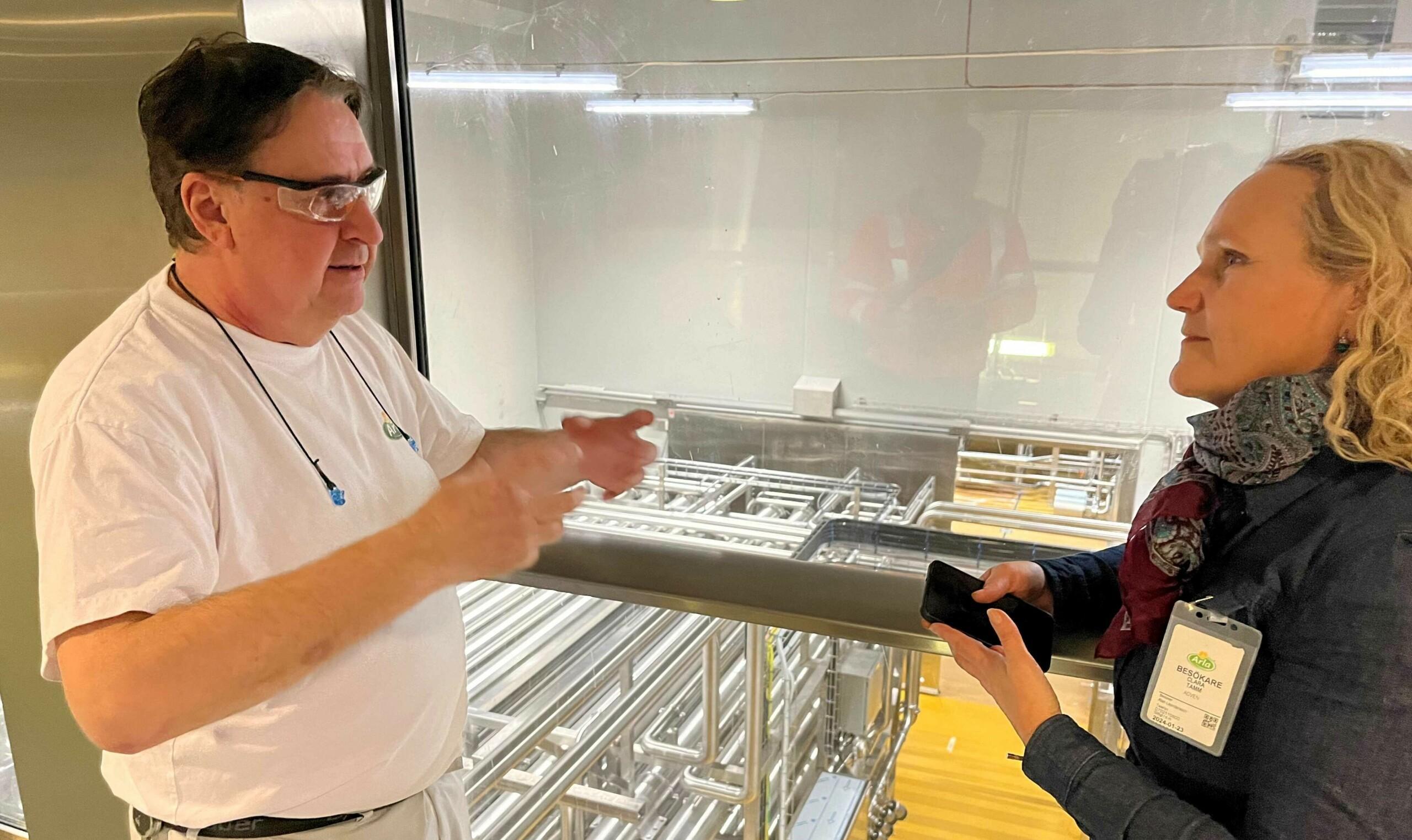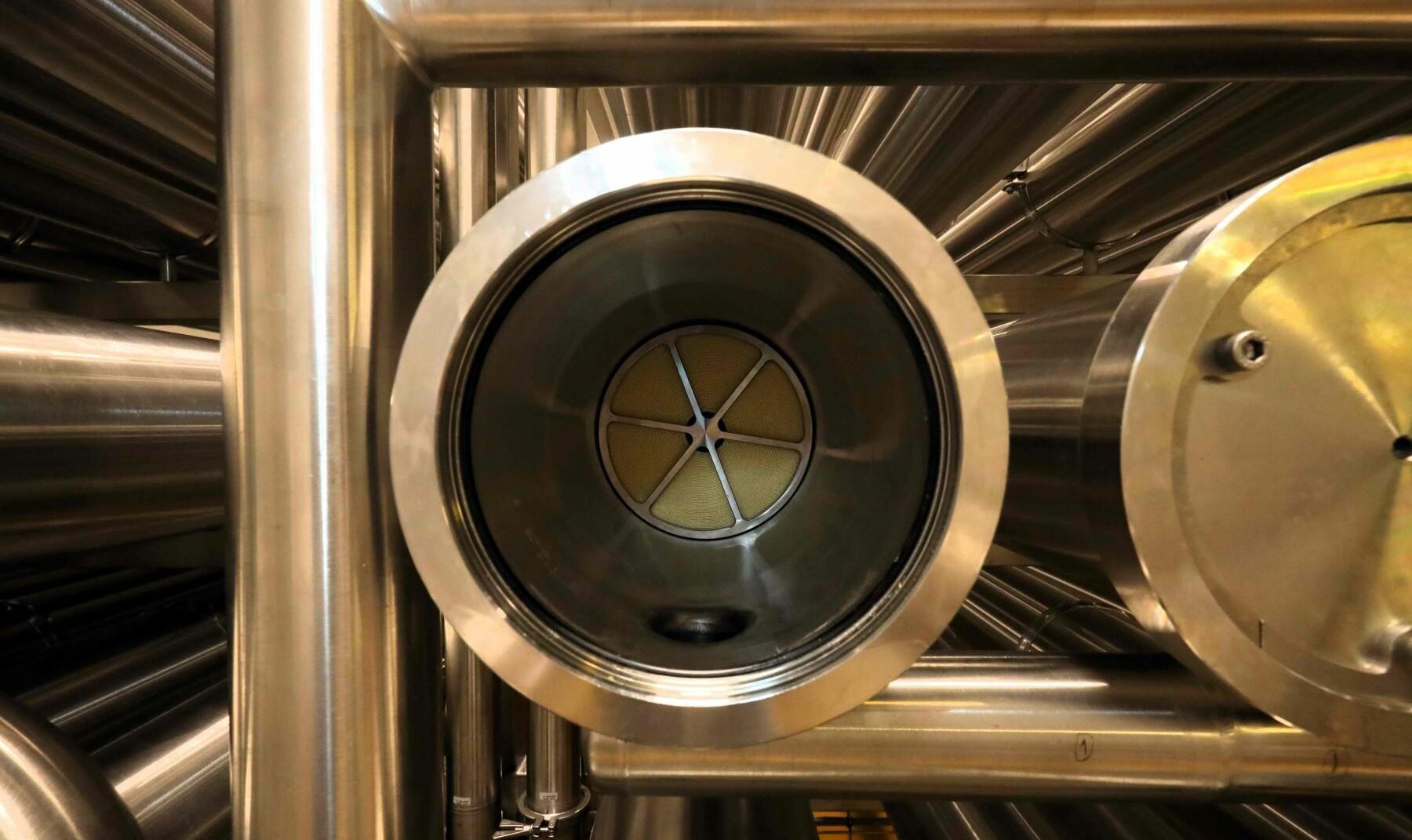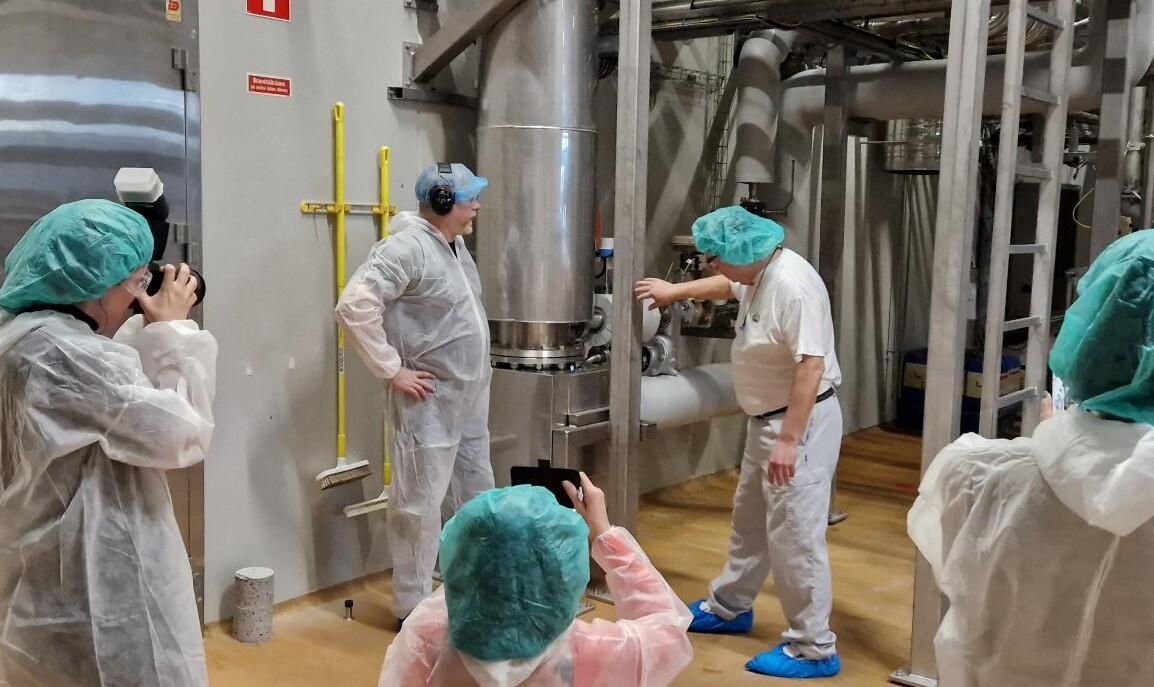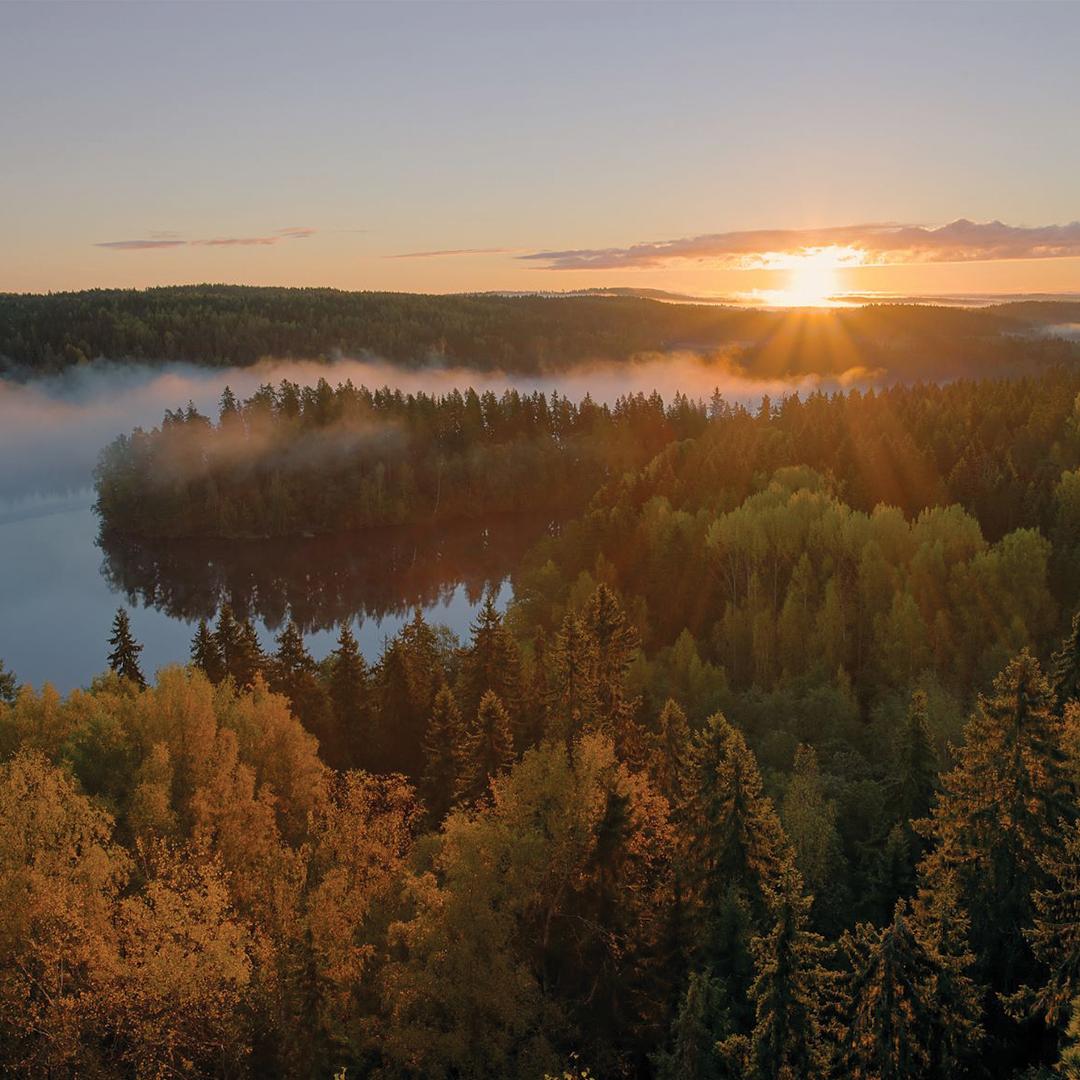Arla Vimmerby increases capacity but cuts emissions and costs
It may seem like wishful thinking, what Arla and Adven are doing in Vimmerby. An energy guzzling dairy saves energy, increases capacity – and then becomes fossil-free as icing on the cake.
“This is the biggest energy saving in Arla’s history”, says dairyman Allan Leandersson, project manager for Arla Vimmerby.
He is now looking forward to focusing on the growing production while Adven takes full responsibility for the energy supply. Sometimes wishes do come true.
It gives the impression of having settled comfortably in the Småland meadows, the international dairy cooperative’s largest milk powder plant. It has been there, in the south of Sweden, for two decades but looks fresh and well-kept. Maybe the hundreds of thousands of visitors who pass closely by on their way to Astrid Lindgren’s World affects tidiness?
“Yes, we have the worlds eyes on us, so we are doing our best for both Astrid Lindgren’s guests and our own,” Allan Leandersson confirms.
Arla’s milk powder plant in Vimmerby is expanding its capacity, but still consumes 40% less energy than before. In collaboration with Adven, it also becomes fossil-free and lowers carbon dioxide emissions.
He has been around from the beginning and knows everything there is to know about powdered milk. When the facility was started, in 2004, it was of course to handle the needs of the time. Since then, demand – and production – have almost doubled. Allan Leandersson has seen the facility expand repeatedly. One of the challenges was the worn-out steam boiler that ran at overcapacity, but eventually put a stop to all further expansion.
“We had reached the limits of what was possible. It was no longer sustainable, not in any way,” Allan Leandersson confirms.
Higher capacity, lower emissions
By this time, the dairymen had several ideas for improved efficiency and recycling. Ideas that thrived with Adven’s engineers who are not bound by specific products or suppliers. They are completely free to adapt solutions to local needs and ambitions – and specialise in making use of resources in both waste and excess heat.
When Arla and Adven started their partnership in 2021, they had two clear goals: capacity to go up and emissions to go down. These are two goals that rarely go together, but CO2 emissions are reduced by 70 percent and the total energy consumption by 40 percent through the collaboration in Vimmerby.
“I don’t think we could have done this alone,” Allan Leandersson comments.
Arla has been gradually reducing its emissions for a long time, but in Vimmerby the 70 per cent still means a reduction of an additional 3,000 tonnes of carbon dioxide per year. At the same time, Adven’s energy solutions save at least 50 GWh – or 50,000,000 kWh – per year benefiting both environment and business.
Saving the environment & millions
What about the capacity? Yes, it will increase by about 20 percent – and this without expansion or extra investment.
“This shows the value of good cooperation, a significant value for both climate and economy,” Victoria Olsson, Arla Sweden’s Head of Sustainability, emphasizes.
According to the Head of Sustainability, collaborations like this are necessary if the industry is to cope with the energy transition. Of course, it can be challenging to allow another company to get so close. Still, not everyone can be an expert at everything, Victoria Olsson argues and adds:
“Arla knows milk, Adven knows energy. It’s as simple as that.”
When Adven took over the energy system in Vimmerby in 2021, it was to secure Arla’s access to steam and hot water, as sustainably as possible. At the top of the to-do list was the old bio boiler, which over the years had been supplemented with extra heat sources such as oil and district heating. With a new control system and an optimized fuel mix, Adven made some progress. Now, it was time to boost the whole system, to increase energy efficiency by taking advantage of everything. In Vimmerby this means flue gas condensation and surplus heat recovery, in multiple stages.
Nothing goes to waste
“We always try to see the big picture, the whole system. That’s how we find solutions that turn ‘nothing’ into resources,” says Clara Collste Tamm, Account Manager at Adven.
She is referring to one of Adven’s best disciplines, heat recovery. Today, the flue gas from the upgraded wood chip boiler is recovered by feeding three large heat pumps. Those three, in turn, increase the efficiency factor of the energy system as a whole. In other words, waste heat, accompanied by experience and expertise, are saving both environment and money, lots of money.
“On top of the increased energy efficiency extra heat sources are no longer needed. A hot water accumulator and a margin in the heat pumps are good back-ups,” explains Johan Goike, Adven’s Project Manager.
One thing remains before the team in Vimmerby can cross the finish line, the replacement of the peak oil. Even if the amount used is small, the fossil peak oil will be replaced with RME, a rapeseed-based bio-oil. As soon as that adaptation is completed, the former energy-guzzling powder plant Arla Vimmerby, will be an energy efficient role model.
RO provides capacity
Despite considerable energy savings, reduced emissions and costs, neither account manager Clara nor project manager Johan can point to any detail that tops the project. It is the collaboration itself that has made the biggest impression, understanding Arla’s needs and processes and watching them interact with the new energy system.
“It does something to you, to be ‘let in’ and learn how a dairyman thinks and works”, says Johan Goike and Clara Collste Tamm.
From Allan Leandersson’s perspective, an appreciated value of the collaboration is that plans and wishes started to happen. As a dedicated dairyman he had long looked forward to making use of the excess heat. Now that the solutions are in place, he sees one detail, a long-awaited one, that shines the brightest.
“To me the crowning glory is the RO”, Allan Leandersson states.
RO (reverse osmosis) has long been used in water purification, not least for desalination. In milk powder production, the RO “filters” the water from the milk more efficiently than other methods. The difference optimises the milk flow, which in turn increases Arla’s capacity by approximately 20 per cent.
Maintenance-free energy
Arla’s and Adven’s collaboration follows the Energy as a Service® model. This means that Adven takes over (or builds) the energy system, operates and develops it on site. The partnerships are at least 15 years, but preferably 20 or 30 years long.
Arla pays for the energy it uses and has its energy supply secured for a considerable time ahead. Another point of the partnership is that Adven is fully responsible for the energy while Arla can focus on its own production. It is also in Adven’s interest to maintain the system for long-term sustainability. Many of Adven’s partnerships have now passed the 20-year anniversary of a so-called porcelain wedding. Some partnerships have even passed the age of 40 – and are still being renewed.
“Of course, this is a commitment from both sides, but once we get over that initial hurdle it is a win-win,” Arla’s Head of Sustainability, Victoria Olsson concludes.
Facts about the partnership:
- In 2021, Adven took over the existing 14 MW bio boiler and increased efficiency by, among other things, optimizing the fuel mix and introducing a new control system.
- With flue gas condensation and RO filters, an additional 50 GWh is saved per year, in total energy consumption in Vimmerby is reduced by 40 percent.
- The RO optimizes the milk flow, which gives 20% increased production capacity.
- CO2 emissions drop by 70 percent, which means approximately 3,000 tons of carbon dioxide per year.
- When the last peak oil is replaced with RME (rapeseed-based bio-oil), Arla Vimmerby also becomes fossil-free.
- In addition to Vimmerby, Adven and Arla have also been collaborating since 2016 on energy supply at the dairy in Kallhäll.




 Newsletter
Newsletter